Elasmosauridae
The Elasmosauridae is a group of very long-necked plesiosaurs. They form a major component of Late Cretaceous plesiosaur assemblages. The definition of Elasmosauridae has changed in recent years as our understanding of plesiosaur evolution has improved. Older definitions included many Jurassic long-necked forms (Bardet et al. 1999; Cruickshank et al. 2002). However, today Elasmosauridae has a more restricted definition and contains exclusively Cretaceous taxa.

Synapomorphies (shared derived characters) of the clade Elasmosauridae include (Bardet et al. 1999):
– Ventral cheek margin weakly excavated
– Pterygoids on palate closed anteriorly (lacks anterior pterygoid vacuity)
– Platycoelus (flat articulation surfaces) to the vertebrae
– Greater than 40 cervical vertebrae
– Cervical centrum length greater than height
– Anterior cervical vertebrae with lateral keel
Elasmosaurid classification
Elasmosaurid genera
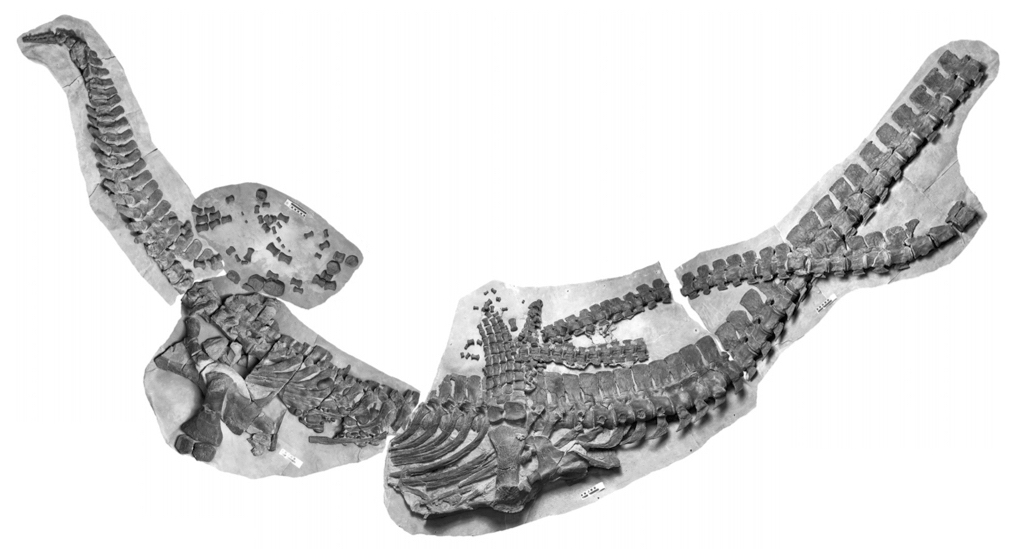
Albertonectes
Albertonectes is a very long-necked elasmosaurid from the Late Cretaceous of Alberta, Canada. The holotype specimen (TMP 2007.0110001) consists of an almost complete skeleton lacking a skull (Kubo et al. 2012). The neck contains 76 cervical vertebrae, which is a unique character of Albertonectes vanderveldei and the highest number of neck vertebrae known for any plesiosaur, surpassing the previous record-holder (Elasmosaurus) by four vertebrae.

Aristonectes
The mysterious plesiosaur Aristonectes is notable for its mouthful of pin-like teeth. A special feeding guild, the ‘trap guild’, has been proposed to accommodate Aristonectes and other plesiosaurs with similar dentition (Chatterjee and Small 1989) such as Cryptoclidus, Kimmerosaurus, and Kaiwhekea.

Elasmosaurus
Elasmosaurus is one of the most widely recognised plesiosaur names and has become a stereotype for all elasmosaurids. However, it is relatively poorly known. The type and only known specimen of Elasmosaurus platyurus (ANSP 10081) includes the tip of the snout, occipital condyle, and the majority of the vertebral column.
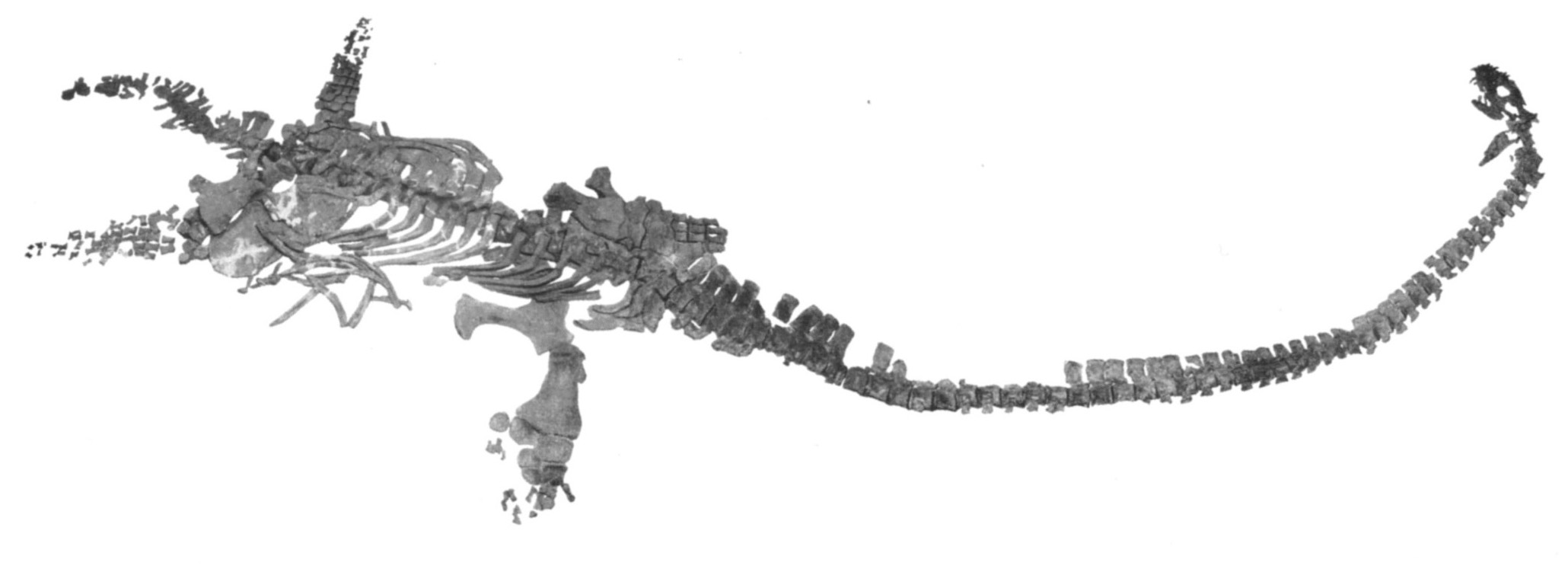
Hydrotherosaurus
Hydrotherosaurus is a long-necked elasmosaurid from California, USA. It is represented by one of the most complete elasmosaurid skeletons ever discovered, so Hydrotherosaurus is one of the best known members of this family. The almost complete type skeleton of Hydrotherosaurus was discovered in the Panoche Hills by Mr.
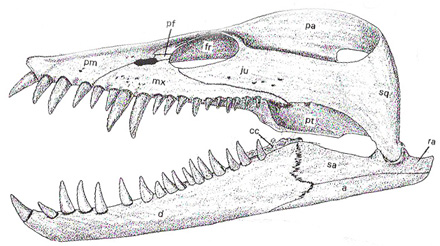
Libonectes
Libonectes was erected for ‘Elasmosaurus morgani’. The pectoral girdle and a forelimb of the holotype are figured (most recently by Welles 1962, fig. 12) but now lost (Carpenter 1999). Libonectes morgani (Welles 1949) is the type and only species.

Morturneria
The taxon was originally named ‘Turneria seymourensis‘ by Chatterjee and Small (1989) but this genus was preoccupied and so Chatterjee and Creisler (1994) later revised the name to Morturneria seymourensis. The holotype specimen is TTU P 9219, an incomplete skull and mandible plus associated cervical vertebrae, from the Lopez de Bertodano Formation of Seymour Island, Antarctica.
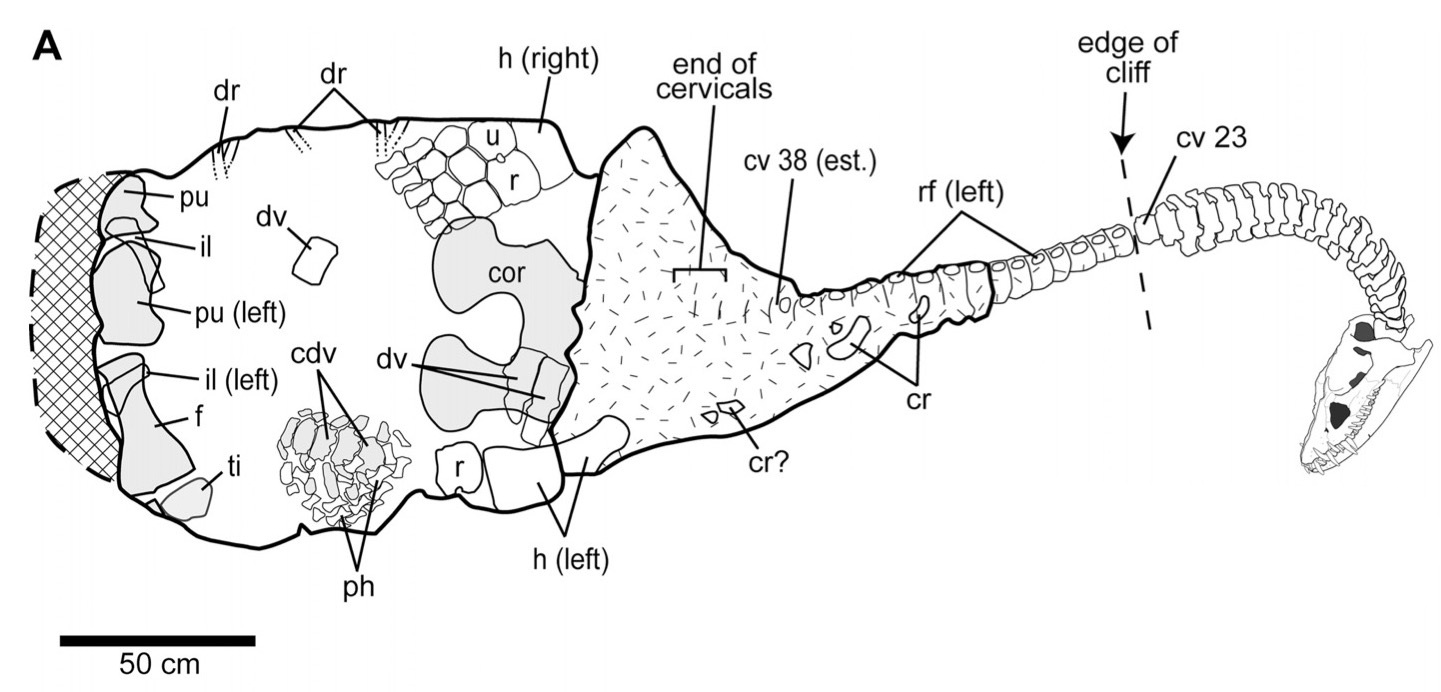
Nakonanectes
Nakonanectes is a small elasmosaurid plesiosaur from the Bearpaw Shale of Montana, USA. It is known from a single moderately complete specimen including a particularly fine skull. It has a relatively short neck for an elasmosaur consisting of ‘only’ 39-42 neck vertebrae.

Ogmodirus
The type skeleton of ‘Ogmodirus’ was collected in 1909 by C. Boyce from the upper Greenhorn Limestone Formation (Lower Turonian, Late Cretaceous) of Cloud County (near Aurora), Kansas (Storrs 1999, Schumacher and Everhart 2005). The specimen, KUVP 441, is a partial skeleton consisting of partial vertebral column (51 cervical vertebrae, 18 caudal vertebrae), limb, and girdle elements.
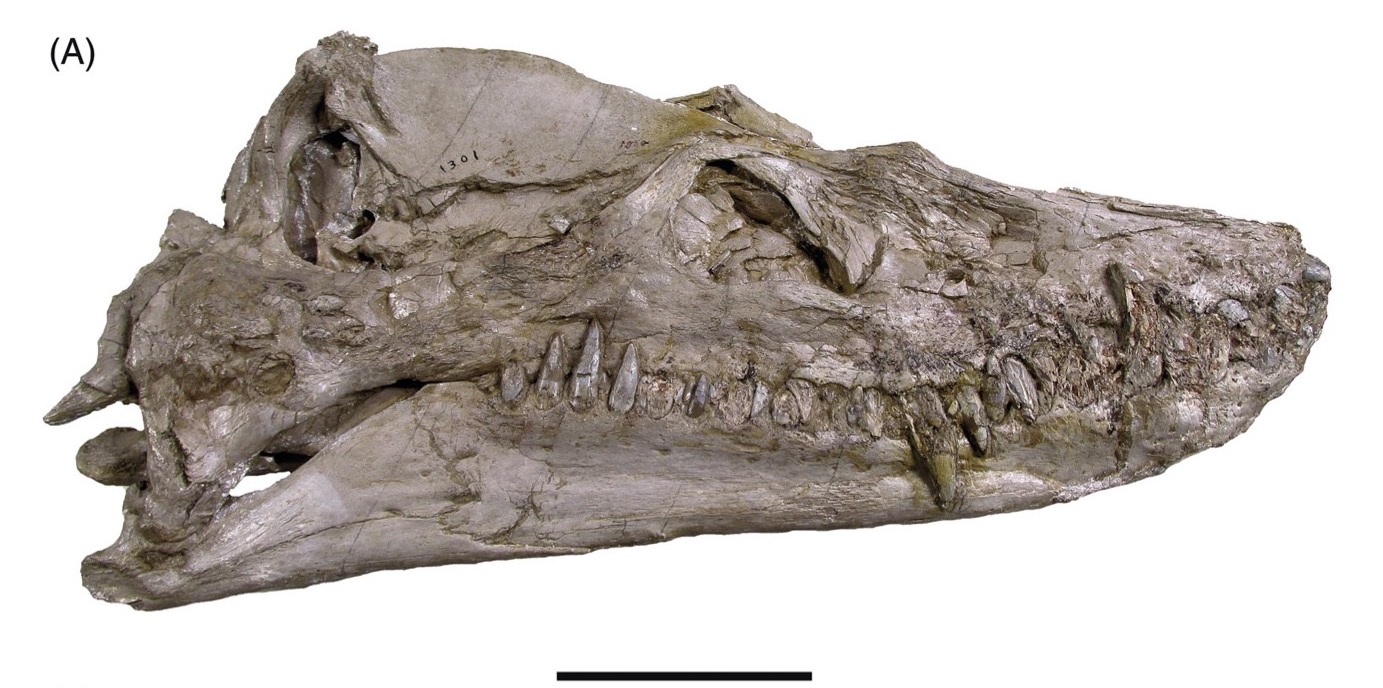
Styxosaurus
The holotype specimen (KUVP 1301) of Styxosaurus is an articulated skull and anterior portion of the neck. It was found in the Niobrara Chalk near Hell Creek, Logan County, Western Kansas in 1890. It was described later that year as a new species Cimoliosaurus snowii by Williston (1890a) (and Williston 1890b), who subsequently (Williston 1906) referred the species to Elasmosaurus.

Thalassomedon
The holotype of Thalassomedon was discovered by R. L. Landberg in 1939 in Baca County, Colorado. Thalassomedon has a short and deep atlas-axis and 62 cervical vertebrae, and there is no pectoral or pelvic bar in the adult condition (Carpenter 1999).
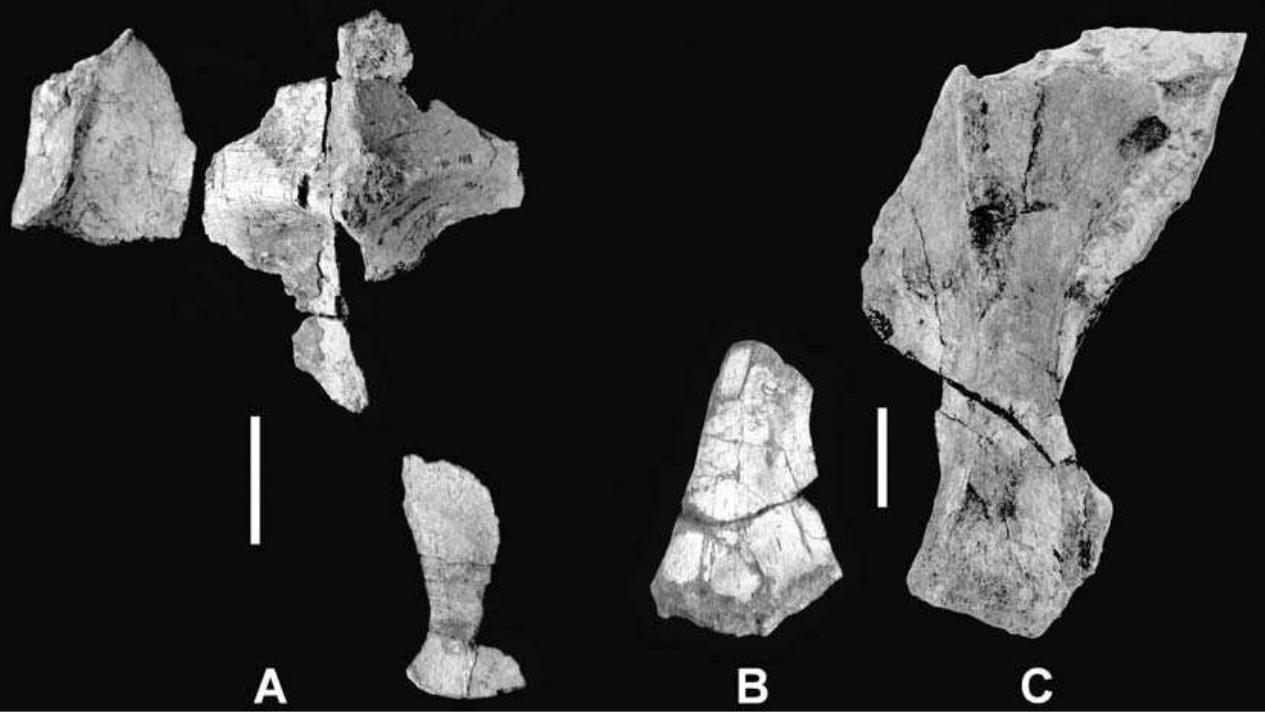
Woolungasaurus
Sachs (2004) regarded ‘Woolungasaurus‘ as a junior synonym of Styxosaurus and assigned the type species (‘W. glendowerensis‘) to that genus under the new combination ‘Styxosaurus glendoweresnis‘.
The following genera do not yet have pages:
- Callawayasaurus
- Eromangasaurus
- Hydralmosaurus
- Mauisaurus
- Morenosaurus
- Terminonatator
- Tuarangisaurus
- Wapuskanectes
- Zarafasaura
Several elasmosaurid genera are considered nomina dubia or are regarded as junior synonyms of other genera. The following names are invalid:
- ‘Woolungasaurus’ = Elasmosauridae indet.
- ‘Alzadasaurus’ = ?
- Aprosaurus ?
- Ogmodirus ?
- Fresnosaurus ?
